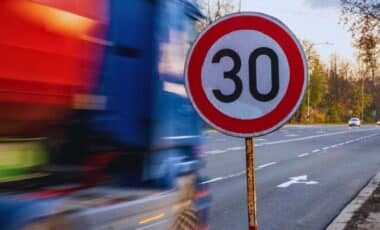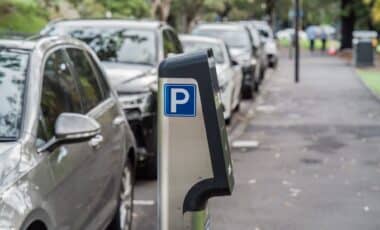Victoria is considering a substantial overhaul of its suburban speed limits, with Infrastructure Victoria, the state’s independent advisory body, proposing the reduction of speed limits to 30km/h in certain areas. This initiative is part of a broader strategy to improve road safety and better accommodate the challenges of Victoria’s growing population.
The proposal aims to make roads safer, particularly in high-traffic zones such as school areas and playgrounds, where pedestrian activity is typically high. The idea, however, has already sparked considerable debate among drivers and other road users. As reported by CarExplore, these changes have divided opinion, with many questioning whether the benefits in safety outweigh the inconvenience of slower travel times.
Aiming to Save Lives: The Case for 30km/h Limits
Dr. Jonathan Spear, Chief Executive of Infrastructure Victoria, strongly advocates for the change, citing compelling data on the impact of speed on pedestrian safety. “A pedestrian struck by a car travelling at 50km/h has an 85 per cent chance of dying. At 30km/h, that risk drops to just 10 per cent,” said Dr. Spear. His argument highlights the stark difference in survival rates for pedestrians, making the case for slower speeds on suburban roads.
Dr. Spear further suggests that these reduced limits would primarily target areas with high pedestrian traffic, such as school zones, before being extended to other suburban streets. He also pointed out that the impact on travel times would be minimal, while the benefits in terms of reducing injuries and fatalities would be substantial.
Trial Zones Already in Place: Melbourne Leads the Way
Melbourne’s City of Yarra has already begun trialing 30km/h zones in areas like Fitzroy and Collingwood, with positive results so far. Similar experiments have been conducted in other cities across Australia, including Sydney, Adelaide, and the Gold Coast, all reflecting a growing trend toward safer, slower local streets.
In support of this initiative, Dr. Lauren Pearson from Monash University’s Sustainable Mobility and Safety Research Group emphasized the potential life-saving benefits of such speed zones. “We have seen the effect of these speed zones in places such as Wales, Canada, Scotland, Colombia, and across Europe,” said Dr. Pearson.
She highlighted Toronto’s success, where serious injuries dropped by 67 per cent after the introduction of similar speed limits. This international evidence strengthens the case for implementing the 30km/h zones in Victoria, offering a model for success in improving road safety.
Costs and Benefits: Will the Public Support the Change?
The proposed changes would come with an estimated cost of $35 million to $45 million, covering expenses for new signage, road markings, and potentially enhanced footpath infrastructure. While the financial investment is considerable, experts argue that the long-term benefits in terms of lives saved and injuries prevented justify the cost.
However, the idea of reducing speed limits on suburban streets is likely to face resistance, particularly from drivers who feel it could result in longer travel times. For many, the inconvenience of slower speeds could outweigh the perceived benefits, leading to potential public pushback.
Rising Road Deaths: A Call for Action
This proposal comes at a time when road deaths in Australia are rising sharply. In 2024, 1,300 people were killed on Australian roads, the highest toll since 2012. With road safety becoming an increasing priority, authorities see reducing speed limits as a key action in addressing the crisis.
The ultimate goal is to halve road deaths by 2030, and measures like the 30km/h speed limits could be crucial in meeting that target. As the Victorian government considers whether to accept Infrastructure Victoria’s recommendations, the broader question remains whether public resistance to slower speeds can be overcome for the greater good of public safety.









